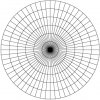Hi guys,
I have been looking into methods of wrist watch dial making and was advised to give this site a visit. I am very impressed by the work I have seen (especially the work by Christian DeCamillis), but as you can understand for someone new to engraving, there's a lot to learn. So perhaps I can get a little insight into the world of engraving, specfically that suited to watch dial making, or very small markings.
Are there any suggestions on a method which would be most suitable to making a dial (or more specifically, marking a relatively thin piece of metal with minute markings)? I am not looking to make an elaborate dial, just a relatively simple design with minute markers. Any insights, or examples would be very much appreciated.
I have been looking into methods of wrist watch dial making and was advised to give this site a visit. I am very impressed by the work I have seen (especially the work by Christian DeCamillis), but as you can understand for someone new to engraving, there's a lot to learn. So perhaps I can get a little insight into the world of engraving, specfically that suited to watch dial making, or very small markings.
Are there any suggestions on a method which would be most suitable to making a dial (or more specifically, marking a relatively thin piece of metal with minute markings)? I am not looking to make an elaborate dial, just a relatively simple design with minute markers. Any insights, or examples would be very much appreciated.








